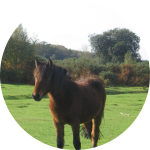| Home |
Welcome to the Horse Stall |
|
Horse Stall contains all types of information for Horse Lovers.
There are a number of products branded horse gifts and products.
Horse Articles :: Horse Breed Glossary - P
|
Horse Breed Glossary - P |
|
POLISH KONIK HORSE Sometimes called Konik polski in Poland, and the Polish Pony elsewhere; the Polish Konik is a pony used for riding and draft in Poland. They are usually mouse gray colored with a stripe on the dorsal. PONY OF THE AMERICAS In 1954, a pony was developed intended to have good appearance, speed and fulfill a need for small riders who were too big for a pony but too small for a full sized horse. The Pony of the Americas is growing in popularity and is a distinctive member of the pony breeds. They have color similarities to the Appaloosa Horse. The Pony of Americas is athletic and can jump, move quickly, and is known for intelligence and patience. Physical Description Pony of the Americas breed have refined heads and Arab-like noses. Their eyes are expressive and they have full bodies with sloping shoulders. They are versatile and can perform a wide variety of tasks. They appear to be small horses. A Pony of the Americas eyes look like a human eye, and they have iris's encircled with white. Their skin has irregular black and white spots, and their hooves are striped. Their coat patterns vary widely, and all have spots that are shaped like eggs. The size of the spots can be anywhere from a speck to a spot that is four inches or more in diameter. POA's are between 46 and 56" at the withers. Fifteen years after ponies were born of the stallion "Black Hand #1" and sired by a shetland from an Appaloosa mare, the Pony of the Americas registry contained over 12,000 registered horses that were the offspring of that breeding. POTTOK HORSE An ancient breed from small horses that are found in Spain and France, the Pottok were once considered a wild horse breed. Now, Pottok horses are domesticated and have owners. Pottok horses are tough and have high levels of endurance. At one time, the breed was used for pack animals and to help work in the mines, but since the 1970's they became used for riding and for children's mounts because of their extremely calm dispositions. Pottok's make good harness animals, and can be put in shows as a dressage mount. In 1983, there was a purebred Pottok called Kuzko who become a champion in the combined show jumping and dressage category. PRZEWALSKI HORSE The Mongolian Wild Horse, or the Przewalski as the breed is called, is one of the last remaining wild horse species. Other wild horses have been domesticated or have been descended from domesticated horses. Until about 1990 or so, the Przewalski breed of horses were extinct in the wild as they were exterminated by hunters. The Przewalski Foundation in the Netherlands and breeding preserves in the Ukraine combined to reintroduce the horses to Mongolia. The Przewalski breed was named after a man it is believed discovered the horses, named Colonel Przewalski, in 1881. There are many different stories about the first people to discover Przewalski horses however, and no one is entirely sure who was first. A Przewalski horse is similar to domestic horses, but they are smaller and their mane stands upright along their necks and their tails are low set. Most of the breed are tan, dun, sandy or reddish bay in color, and have a dorsal stripe and shoulder stripe. The breed is very rare, and almost all of the remaining hundred or so Przewalski horses live in zoos. PYRENEAN TARPAN HORSE A breed that takes on a different name depending on the country they're in, the Pyrenean Tarpan is part of the Konink breed type and the result of an attempt to preserve the purity of this type of horse. In Poland, they are called Pottok; in France they were called Navarre Pony, and in Spain they are Asturian, while in Portugal they are known as Garrano. The breeds are regional but very similar genetically. When the ice age occurred, the change in the environment caused the horses to become brown and black to help them avoid predators. Baby horses of the Pyrenean Tarpan breed have the original tarpan coloration for their first three months of life. As the population of humans increased, the wild ponies were forced into the mountains. Before 1950, it was very difficult to find the Pyrenean Tarpan horse but since 1970, people have been keeping the Pyrenean Tarpans with tehir Welsh, Shetland, Arabians, Spanish and Breton horses. starting in 1990, groups and organizations studying the Pyrenean Tarpan have been working to conserve the remaining members of the breed. They released horses into various areas of the wild mountains to avoid inbreeding. About the Author |
Top Horses |
|
| Top Horse Movies | |
Horse Resources |
|
Horse Health |
|
Horse Breeds |
|
More Horses |
|


| Copyright 2005-2021 DR Management All rights reserved |
Dog Gifts | Wildlife Gifts | Handmade Horse Gifts |
